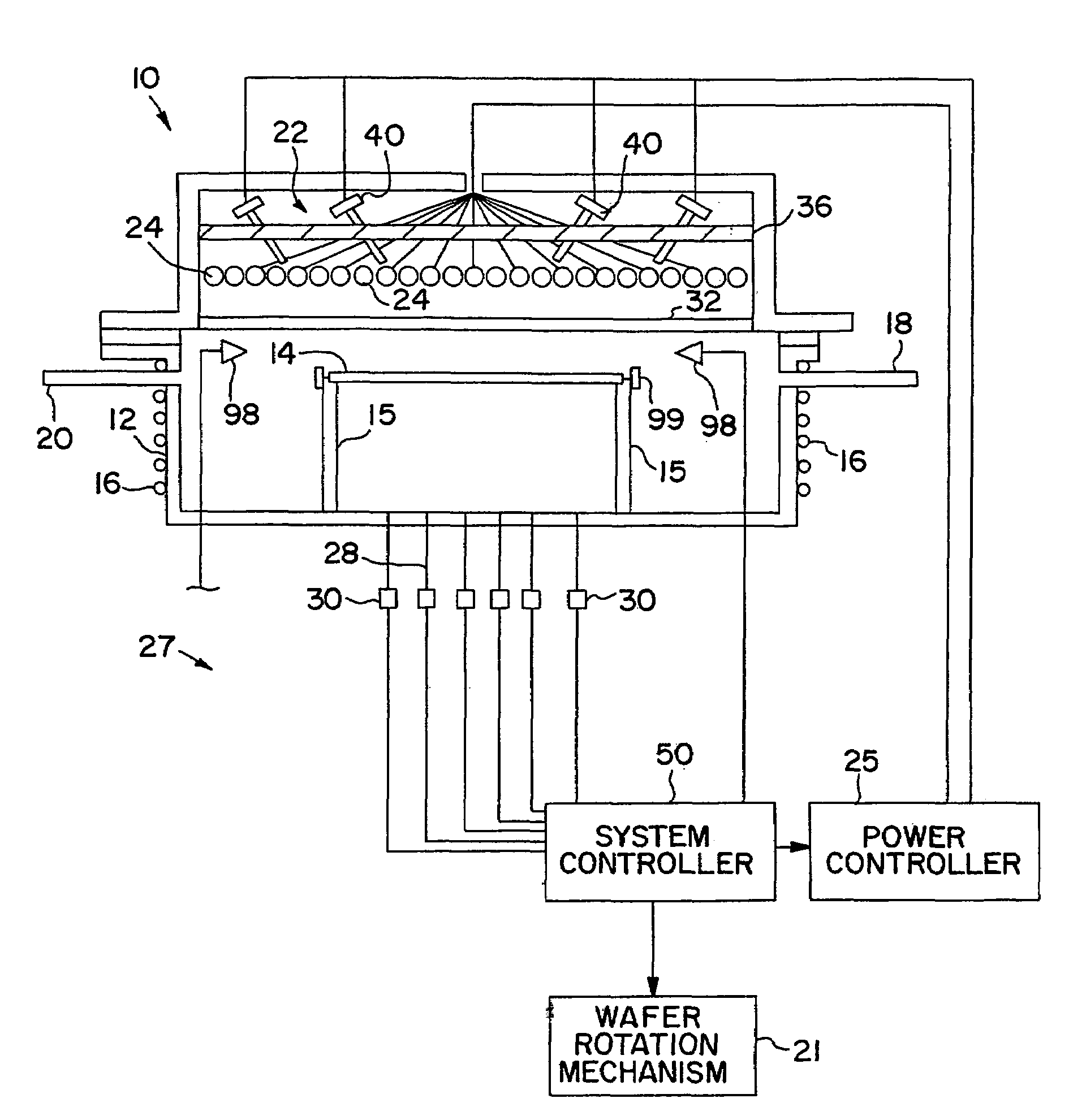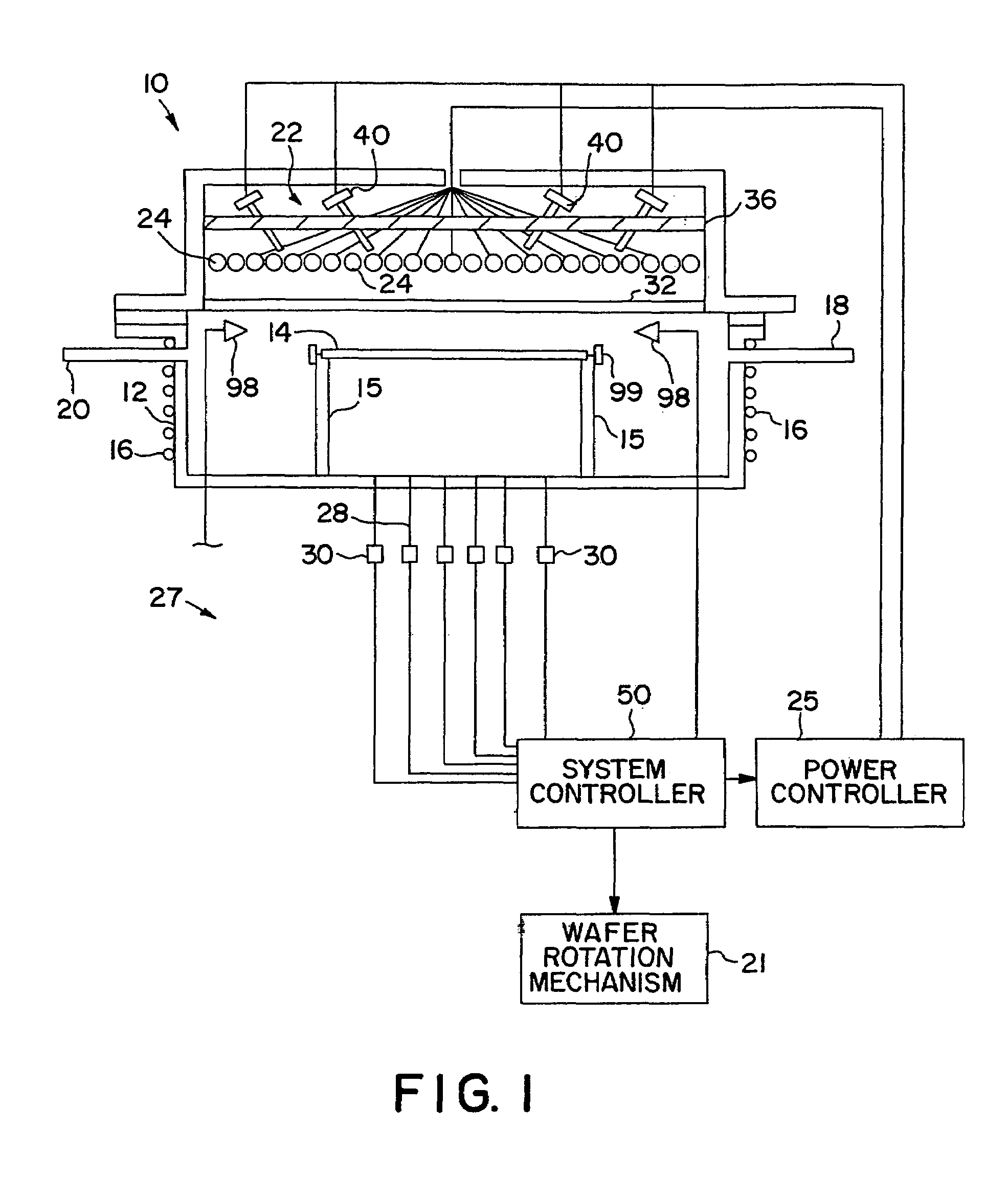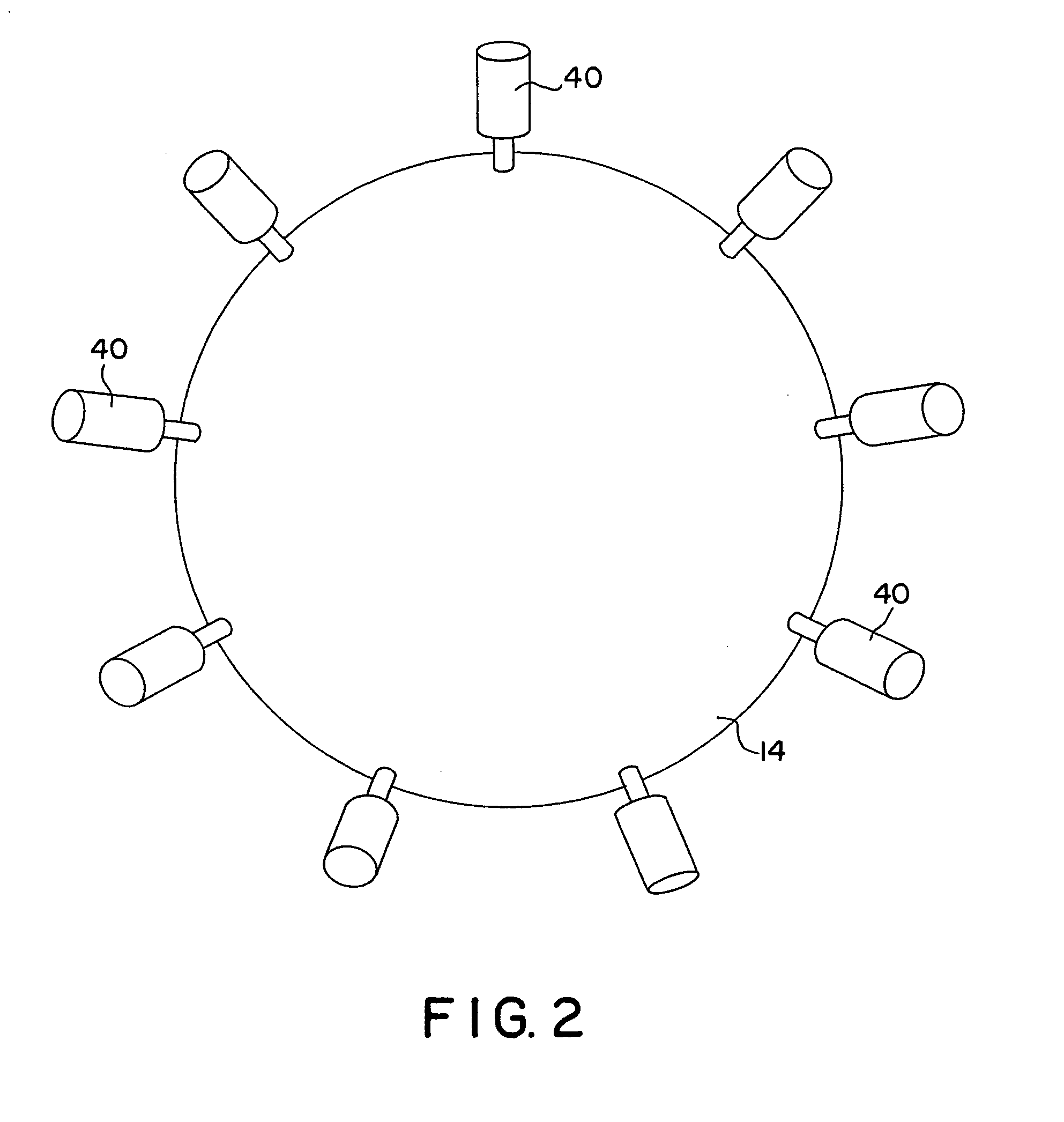System and process for heating semiconductor wafers by optimizing absorption of electromagnetic energy
a technology of electromagnetic energy and electromagnetic energy, applied in the field of thermal processing chambers, can solve the problems of limiting the ability, limiting the ability, and limiting the ability, so as to achieve uniform heating and efficient heating of the wafer
- Summary
- Abstract
- Description
- Claims
- Application Information
AI Technical Summary
Benefits of technology
Problems solved by technology
Method used
Image
Examples
Embodiment Construction
[0029]It is to be understood by one of ordinary skill in the art that the present discussion is a description of exemplary embodiments only, and is not intended as limiting the broader aspects of the present invention, which broader aspects are embodied in the exemplary construction.
[0030]A thermal processing apparatus uses thermal energy, such as intense light, to heat a semiconductor wafer as part of the manufacturing process of integrated circuits. Exposure to light energy causes a rapid increase in the temperature of a semiconductor wafer and allows processing times to be relatively short. In rapid thermal processing systems, it is important to radiate the wafer with very high intensity light in a very uniform and controlled fashion. As stated above, the difficulty with current devices is that the requirements for the intensity of the radiated light and the ability to heat wafers uniformly are very difficult to achieve.
[0031]For instance, semiconductor wafers are frequently coat...
PUM
| Property | Measurement | Unit |
|---|---|---|
| angle of incidence | aaaaa | aaaaa |
| angle of incidence | aaaaa | aaaaa |
| angle of incidence | aaaaa | aaaaa |
Abstract
Description
Claims
Application Information
 Login to View More
Login to View More - R&D
- Intellectual Property
- Life Sciences
- Materials
- Tech Scout
- Unparalleled Data Quality
- Higher Quality Content
- 60% Fewer Hallucinations
Browse by: Latest US Patents, China's latest patents, Technical Efficacy Thesaurus, Application Domain, Technology Topic, Popular Technical Reports.
© 2025 PatSnap. All rights reserved.Legal|Privacy policy|Modern Slavery Act Transparency Statement|Sitemap|About US| Contact US: help@patsnap.com



